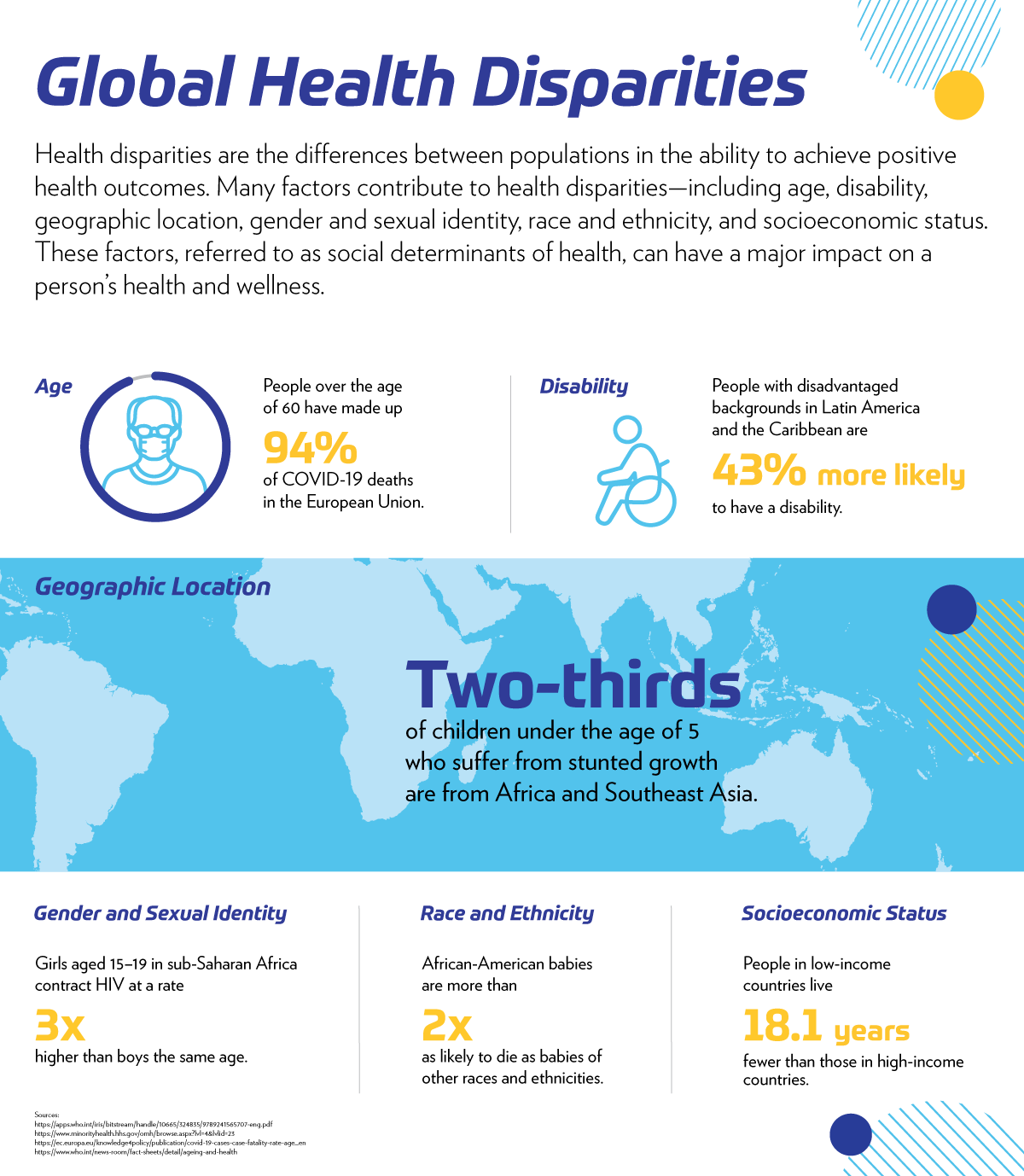
Identifying and addressing global health disparities is more important than ever. To address these differences in health across populations, it’s critical to understand what constitutes a disparity.
“If a health outcome is seen to a greater or lesser extent between populations, there is disparity,” according to HealthyPeople.gov. “Race or ethnicity, sex, sexual identity, age, disability, socioeconomic status and geographic location all contribute to an individual’s ability to achieve good health.”
Health disparities are far reaching and can affect a wide range of diverse patient populations.
One example is socioeconomic status. According to the World Health Statistics 2020: Monitoring Health for the SDGs report, the income level of a country has a direct correlation with life expectancy. The life expectancy of low-income countries is 18.1 years lower than high-income countries.
A report by Healthbox, a HIMSS Solution, explored how your ZIP code can carry more weight on your potential health outcomes than your genetic code. For example, in the city of Chicago, individuals residing in “the Loop,” the heart of downtown Chicago, have a median income of $103,336 and an average life expectancy of 83 years. But for residents living in the nearby neighborhood of Washington Park—just three train stops south of downtown Chicago—the median income is $25,385, with an average life expectancy of 69 years. This gap in life expectancy, the report noted, is even larger than the one between the U.S. and Honduras.
The Journal of the American Medical Association identified some of the factors that contribute to the disparities among low- and high-income populations as access to care, environmental factors, health behaviors and the labor market. These factors are also referred to as social determinants of health. Social determinants of health—defined by the World Health Organization as the conditions in which people are born, grow, live, work and age—can influence a significant percent of your health outcomes.
Acknowledging these disparities globally is the first step to understanding the health inequities faced by millions and bridging the divide between different populations.

Global Health Equity Network
Help advance the cause of health and wellness for everyone, everywhere by advocating for underserved groups in health information and technology around the globe, and collaborate to find real-world solutions to challenges and roadblocks